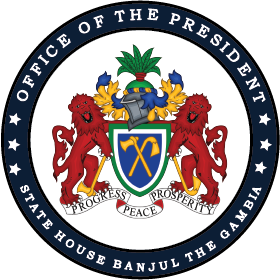SECTOR
Ministry of Health
CONTENT
The National Malaria Policy (2021–2025) of The Gambia focuses on eliminating malaria as a public health concern by 2025. It aligns with global frameworks like the WHO Global Malaria Technical Strategy (2016–2030) and emphasizes universal access to prevention, diagnosis, and treatment.
Main Objective
The policy aims to achieve zero malaria deaths and eliminate indigenous malaria transmission across all regions of The Gambia by 2025.
Specific Objectives
-
Prevention: Ensure universal coverage of insecticide-treated nets (ITNs) and indoor residual spraying (IRS).
-
Diagnosis and Treatment: Provide prompt and effective malaria diagnosis and treatment at all levels.
-
Community Engagement: Raise awareness and involve communities in malaria prevention and control efforts.
-
Capacity Building: Train healthcare workers and strengthen health infrastructure for malaria control.
-
Monitoring and Evaluation: Establish systems to track progress and adapt strategies based on evidence.
-
Partnerships: Collaborate with national and international stakeholders to mobilize resources and expertise.
Summary
The National Malaria Policy (2021–2025) outlines a comprehensive framework to eliminate malaria in The Gambia. It emphasizes universal access to preventive measures like ITNs and IRS, effective diagnosis and treatment, and community engagement to raise awareness. The policy also focuses on capacity building, monitoring, and fostering partnerships to ensure sustainable progress.
Key strategies include:
-
Scaling up ITN distribution and IRS coverage.
-
Training healthcare workers in malaria diagnosis and treatment.
-
Conducting public awareness campaigns to promote preventive behaviors.
-
Strengthening data collection and analysis for informed decision-making.
-
Collaborating with international organizations to align with global malaria elimination goals.
The policy envisions a malaria-free Gambia by 2025, contributing to improved health outcomes and socio-economic development.
-
Ministry of Public Service
7 documents -
Office of The Vice President
3 documents -
Ministry of Agriculture, Livestock and Food Security
8 documents -
Ministry of Basic and Secondary Education
2 documents -
Ministry of Defence
3 documents -
Ministry of Environment, Climate Change and Natural Resources
9 documents -
Ministry of Finance and Economic Affairs
11 documents -
Ministry of Foreign Affairs and International Cooperation
2 documents -
Ministry of Health
30 documents -
Ministry of Higher Education, Research, Science and Technology
3 documents -
Ministry of Communications and Digital Economy
24 documents -
Ministry of Interior
3 documents -
Ministry of Justice
1 document -
Ministry of Petroleum and Energy
5 documents -
Ministry of Trade Industry and Employment
8 documents -
Ministry of Transport Works and Infrastructure
3 documents -
Ministry of Tourism and Culture
3 documents -
Ministry of Women, Children and Social Welfare
12 documents -
Ministry of Youths and Sports
2 documents -
Ministry of Land and Regional Government
1 document -
Ministry of Fisheries and Water Resources
3 documents -
Office of The President
0 documents

